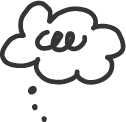Critical thinking
This text answers the questions: What is critical thinking, and how can it be practised?
By: Tuukka Tomperi, PhD (Ed.), MA (Phil.), Senior Researcher (Faculty of Education and Culture, Tampere University)
This text answers the questions: What is critical thinking, and how can it be practised?
By: Tuukka Tomperi, PhD (Ed.), MA (Phil.), Senior Researcher (Faculty of Education and Culture, Tampere University)
We live in a time when more scientific and expert knowledge is available than ever before. Thanks to digital technologies, anyone with internet access can retrieve information more easily than in the past. Likewise, communication between people is now broader and more frequent than at any other point in human history. These developments offer excellent opportunities for knowledge-based civic dialogue and democracy.

However, the unprecedented availability of information, communication and media has not automatically led to a corresponding increase in knowledge among individuals, communities or societies. Misinformation and disinformation spread just as easily as reliable facts – sometimes even more effectively. Similarly, the mere possibility of communication does not guarantee greater mutual understanding or listening. On the contrary, it has also intensified conflict and polarisation. Transforming accessible information into meaningful, functional knowledge that can influence people’s lives requires significant individual and collective learning.
One common response to these challenges is to strengthen critical thinking and dialogue skills, both in education and throughout society’s institutions. Critical thinking and dialogical conversation can complement each other and should be seen as two sides of the same coin. Crucially, critical thinking should not be seen as a skill that is easily acquired but as a holistic ability influenced by various aspects of human life from reasoning and emotions to attitudes and habits. To cultivate critical thinking collaboratively, we need social trust and constructive community practices (Baggini 2023; Tomperi 2017).

In 1990, a group of experts in the field defined critical thinking as a deliberate and self-reflective process of forming judgments, which involves examining concepts (language used), available evidence, reasoning, the criteria applied and the context (Facione 1990). In simpler terms, critical thinking means refraining from making quick judgments and instead exploring a topic from multiple perspectives before forming a reasoned opinion – one we can explain clearly to others.
The same expert group also emphasised the importance of attitudes and dispositions for developing as a critical thinker. These include open-mindedness, the courage to question, fairness, awareness of personal biases, diligence, perseverance, and the ability to recognise one’s own fallibility and change views when necessary (Facione 1990).
It is important to note that in philosophy and science, “critical” does not mean negative, dismissive or hostile, as it often does in everyday language and media. Just as a literary, music or art critic’s task is not to condemn but to deeply engage with the work and provide assessments (which may well be positive), the goal of critical thinking is to arrive at well-considered judgments supported by sound reasoning.
Still, we are not capable of critical reflection at all times or in every situation. Much of our daily life and activities relies on fast decisions and choices. Our thinking is largely spontaneous and unconscious. The role of critical thinking is to interrupt that spontaneous flow – to pause and reflect. This kind of interruption and reflection takes time and energy, and can even feel frustrating. That is why critical thinking requires the whole human being: intellect, knowledge, emotion, will and attitude must work together, not against each other.

Philosopher Matthew Lipman describes skilful thinking as comprising three dimensions: critical, creative and caring. These aspects are all present in our attempts to think well. All three are activated when we solve problems or learn new methods, for example. Thinking about new possibilities requires creativity, but we need critical thinking to filter and evaluate them. We also need to care about the problem or the goal of our work to have the motivation to work towards solving or achieving it. Good thinking requires all three – just as aesthetic creation, critical analysis and ethical caring are dimensions of a meaningful human life (Lipman 2019).
Although practising critical thinking can be demanding and does not come naturally – it often requires considerable effort – there are certain habits you can practise, and that can serve as signposts:

Baggini, Julian (2023). Filosofisen ajattelun opas (How to Think Like a Philosopher). Translated by Tapani Kilpeläinen. niin & näin. Tampere. https://netn.fi/syn_publication/filosofisen-ajattelun-opas/.
Facione, Peter (1990). Critical Thinking. A Statement of Expert Consensus for Purposes of Educational Assessment and Instruction. The Delphi Report, Executive Summary. California Academic Press, Millbrae. Available online at: https://www.researchgate.net/publication/242279575_Critical_Thinking_A_Statement_of_Expert_Consensus_for_Purposes_of_Educational_Assessment_and_Instruction
Lipman, Matthew (2003). Ajattelu kasvatuksessa (Thinking in Education). Translated by Tapani Kilpeläinen. niin & näin. Tampere. https://netn.fi/syn_publication/ajattelu-kasvatuksessa/
Tomperi, Tuukka (2017). Kriittisen ajattelun opettaminen ja filosofia. Pedagogisia perusteita. niin & näin 4/2017, 95–112. Available online at: https://netn.fi/artikkelit/kriittisen-ajattelun-opettaminen-ja-filosofia-pedagogisia-perusteita/
Tomperi, Tuukka (2022). Salaliittoteoriat. Katsaus salaliittokertomusten vetovoimaan ja ideologiseen hyväksikäyttöön. niin & näin 2/2022. Available online at: https://netn.fi/artikkelit/salaliittoteoriat/
